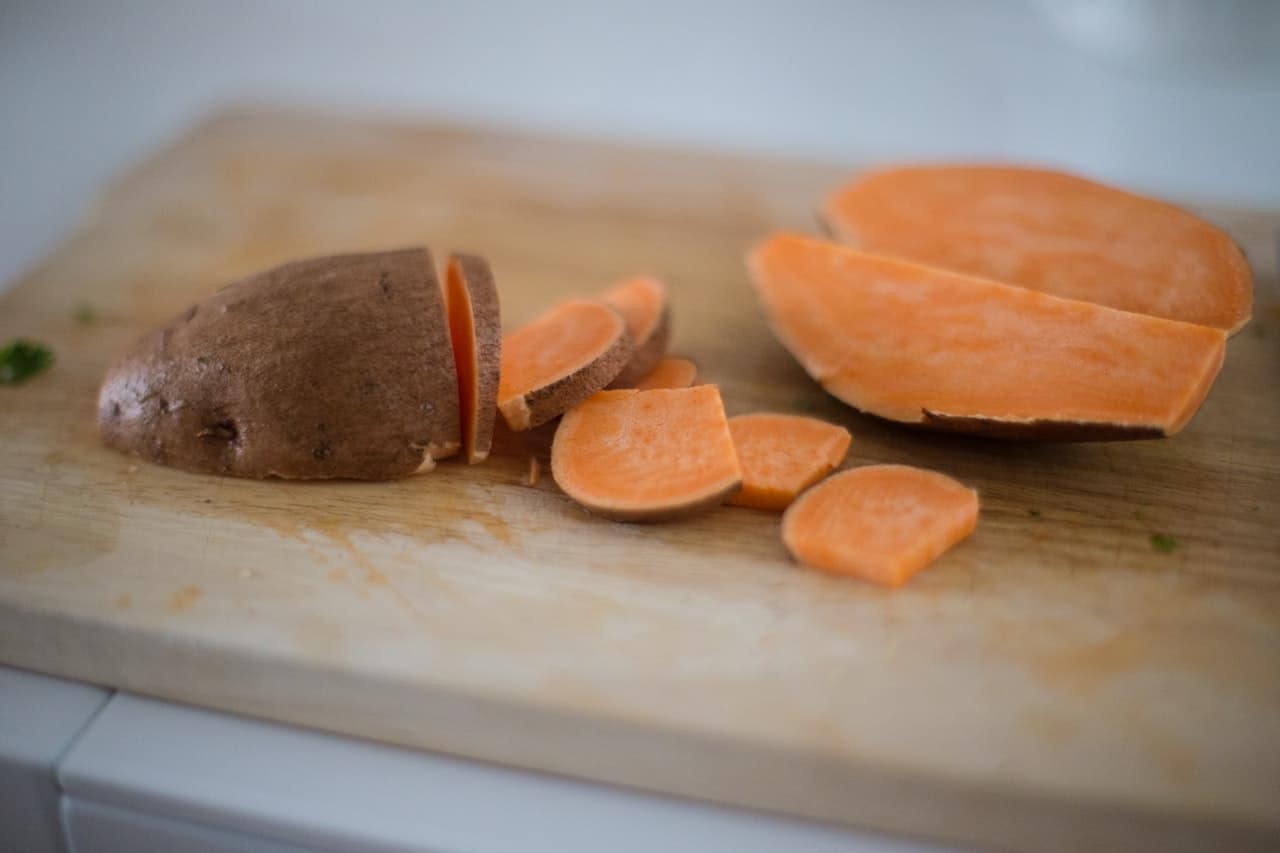Should you use grapeseed oil for cutting boards? How about linseed oil for cutting boards? Is flaxseed oil for cutting board the ideal solution? And then there’s food-grade mineral oil, too.
There are so many choices for seasoning a wooden cutting board that it is easy to get confused. Today’s blog sheds plenty of light on how to do this crucial maintenance properly, with the material you can find at home. It is not that complicated!
Seasoning a Wooden Cutting Board
How do you season a wooden cutting board?
Seasoning a wooden cutting board is necessary to prolong the life of your precious board and to prevent unnecessary cracking and to split on the surface. Cracks on the surface, or any damage at all, can spell the end of a cutting board because bits of food will begin to enter those cracks and cause bacteria to explode.
This is one of the downsides of using wooden cutting boards – they are prone to damage without proper maintenance, and you must be able to season your wooden boards (and spoons, if you have them) every two to three weeks if you don’t use them all that frequently, twice-monthly is still the minimum because if they get too dry internally, they are going to split, because that is simply how wood reacts to drying.
Many home chefs and professional chefs still use wooden boards because they are elegant, reliable, and they enjoy the maintenance involved.
It’s a lovely relationship between a timeless kitchen implement and the chef, and many chefs feel that seasoning their boards is a lot like sharpening knives.
To season a wooden cutting board, you first need to give it a good cleaning. Scrub it down with some warm water and soap, and place it outside to dry thoroughly.
You cannot season a wet board. The more bone dry it is, the more likely it will absorb the oil that you are going to apply, and the more successful the seasoning process will be. So you may want to schedule seasoning ahead of time, so the wooden cutting board is dry enough for the actual seasoning.
When the wooden cutting board is thoroughly dry, get your oil (like food-grade mineral oil) and pour just enough to cover each side of the board. After pouring an even layer, use your cloth to spread it evenly across. The board will absorb the oil, leaving a nice, dark sheen on the surface. When one side is done, switch to the underside of the board and do the same. There is no need to over-apply oil, but at the same time, if you feel that the board needs more oil because the surface absorbed too much oil on the first application, feel free to make a second application with 50% less oil.
Once the two main sides are done, it’s essential that you also season all the sides of the wooden cutting board as these are prone to cracking and splitting, too.
Professional tip: if you have an extra-large and heavy board at home, it might be a good idea to pour the oil in separate sections so that every part of the board gets an even coating. After pouring and separating the doses of oil, you can wipe down the current surface and do the same for the other side.
After seasoning your board, it has to be left to dry and season for at least a few hours. For the best possible results, don’t use your cutting board for 24 hours. If you don’t have any other board at home, now would be a good time to order or buy a spare board so you will have something to use while your wooden board is still being seasoned.
After allowing the board to soak overnight, there may still be some leftover oil on the surface. Wipe away the excess oil and buff the surface of the board to perfection. Congratulations – you know, have a perfectly buffered and seasoned wooden cutting board, once again ready to serve in the kitchen.
What is the best oil for wooden cutting boards? Can you use vegetable oil to season a cutting board?
While there are seasoning oils designed for wooden cutting boards and other woodenware, we recommend that you avoid vegetable-based oils that can turn rancid quickly.
Food-grade mineral oil is the standard for seasoning wooden cutting boards. Some enthusiasts also use a combination of beeswax and food-grade mineral oil. They call the concoction spoon butter because they’re also used to season wooden spoons.
Canola oil and EVOO are bad choices for seasoning wooden cutting boards because they can turn rancid quickly. Rancid oil can make your cutting board smelly and unusable. The unsavory smells and the possible flavors left behind by the rancid oil can also affect the taste of the food you are preparing because the raw ingredients will be placed on the surface of the board.
Vegetable-based oils that are touted to have many antioxidants are also a wrong choice because they cause unnecessary gumming on the surface, which will also have an impact on the smell and taste of the food prepared on the board. If you don’t want to work with food-grade mineral oil, the next best thing is coconut oil. Coconut oil works wonders on wood, and it is fragrant and neutral when it comes to taste. You cannot go wrong with coconut oil for seasoning wooden cutting boards. If you have time, you can prepare spoon butter at home as well, by combining coconut oil with pure beeswax.
To create spoon butter, simply heat one cup of coconut oil and one-fourth cup of pure beeswax to 150˚ Fahrenheit. Use a spatula or egg beater to combine the ingredients well. The beeswax will turn liquid pretty quickly, so work the ingredients consistently until you get a nice, warm paste. You may apply the warm spoon butter to the board immediately after mixing.

